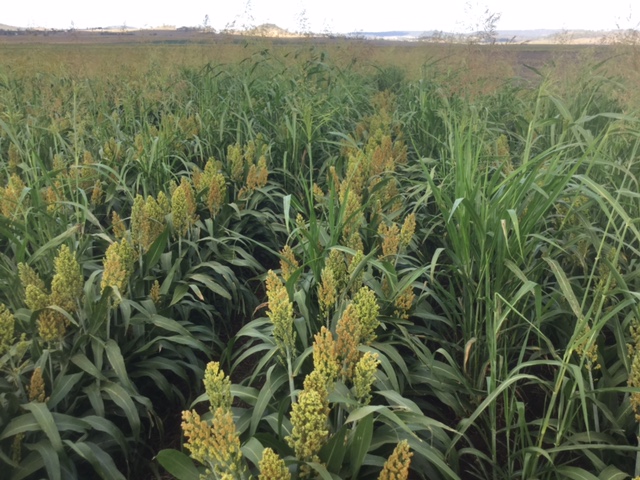Try as I might, sometimes I just cannot convey my practical experiences to some younger folk.
Last month it was all to do with this tall, whippy perennial grass weed called Johnson Grass, with the botanical name Sorghum halepense. Introduced from the Mediterranean as a pasture grass, it soon became very invasive and toxic to livestock at times.
Spread by seed and its rhizome roots, much of Queensland and NSW has this dratted weed along roadsides, watercourses, stock routes, and of course in our grain-producing paddocks.
Now my best advice is to strategically use more herbicide options than various mechanical operations, as most soil disturbances just increase the spread of seed or sections of live roots.
This vigorous plant really is increasingly impacting our grain yields and, importantly, the quality of grain samples for our key export markets.
The best control is using herbicides like our most effective product, Glyphosate, with its translocatory ability of moving through to extended parts of roots and leaf tips. This above- and below-ground weed control aspect of Glyphosate has greatly assisted Australian agriculture.
However, there is a limit to how far this Glyphosate herbicide will move or translocate along various plant parts.
So it is with the extensive root system of an older Johnson Grass plant that Glyphosate may not give total control due to an old, extensive root system below ground.
By “long,” I mean roots can extend up to three metres away from the base of the Johnson Grass plant, and from my experience, these plants are not 100 per cent controlled by any herbicide option we currently have due to this large root system. Invariably, you cannot get enough uptake of Glyphosate into the green leaves above ground to control all these underground root sections.
So in cases like this, before applying heavy doses of any grass herbicide, I suggest you ascertain the extent of your Johnson Grass root system.
Perhaps, if possible, a mechanical operation using a tyned implement to break up these extensive rhizome roots is a better plan.
This will not kill this invasive plant; however, given time, these still-living shorter root systems will shoot up new fresh green leaves above ground, which is the best timing for a herbicide application, particularly in autumn.
These days we do have IMI-tolerant maize and grain sorghum varieties, and these selective imidazolinone mode-of-action herbicides can control many grass and broadleaf weeds in these peculiar traited crops.
Many of our pulse crops also tolerate these Group 2 herbicides; however, all care and advice should be sought before any spray operation.
Like many of our weeds, they started as plants out of place in our Aussie landscape. Keep your weeds under control for the betterment of our farming systems and, importantly, our export markets.






